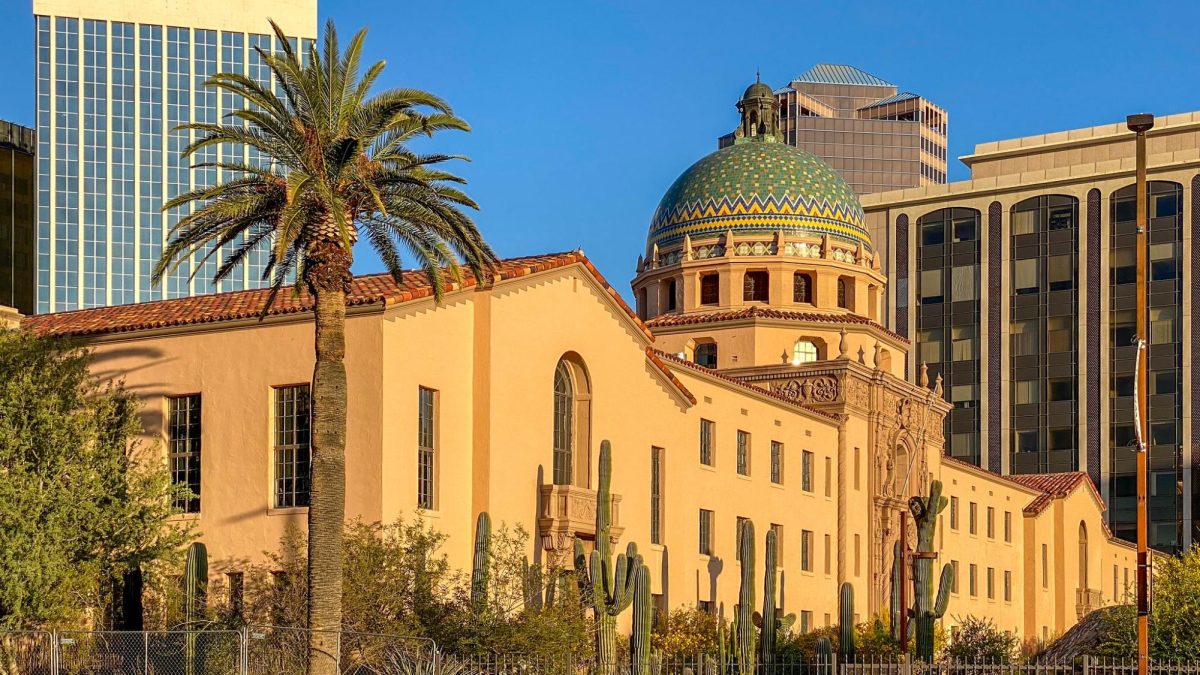A 2015 study shows that more Mexican immigrants are returning back to their home country rather than entering the U.S.
A study by the Pew Research Center published last month, shows a net loss of 140,000 Mexican immigrants from 2009-2014. The study also shows that the number of Mexican immigrants in the U.S. is at its lowest point since the 1990s.
Within the last five years, 1 million Mexicans and their families left the U.S. for Mexico, according to a study done by the 2014 Mexican National Survey of Demographic Dynamics. U.S. census data from the Pew study shows that 870,000 immigrants came into the country — a smaller number than those returning back to Mexico.
The study found that reuniting with family is the primary reason that Mexican immigrants leave the U.S.
Anna O’Leary, associate professor and department head of UA Mexican American Studies, said the fact that so many Mexicans are returning in order to be with their families explains the importance of family and a major reason why immigrants enter the U.S.
“People come here to work, but not necessarily to enrich themselves,” O’Leary said. “They come for work so they can support their families back in their country of origin.”
O’Leary said that although the reunification of families is a driving force for those going back to Mexico, the U.S. economy has also played a roll.
“Now that the economy is a little bit better, a lot of the people stayed; they kind of weathered the recession and hunkered down and now that the economy is looking better, they’re starting to send money back home again,” O’Leary said.
Determining how many Mexicans are leaving the U.S. is difficult because there is no official measure of the number of immigrants entering the country. It’s hard to tell whether those returning to Mexico are U.S.-born children of Mexican Nationals, or Mexicans by ethnic identity rather than citizens of Mexico, O’Leary said.
“There’s a lot of factors that go into how we measure who returns so that we can get an accurate number,” she said.
Diego O’Farrill, an architecture senior, was born in Mexico City and migrated to the U.S. when he was 5 years old. O’Farrill said he has close ties to Mexico because he would visit every summer.
“I would consider myself American because I grew up here, but I still have a Mexican heart,” O’Farrill said.
O’Farrill suggests that Mexican immigrants originally came to the U.S. for work opportunities. However, he thinks that immigrants are returning home because this opportunity is not what it once was.
“Some jobs are just not paying enough money to sustain a family because normally people from Mexico come here to earn money and send it back home, but if the opportunities aren’t as good and they’re still staying here separated from their family, they may take the option to go back and be with their families,” O’Farrill said.
O’Farrill said that Mexicans and their families returning to Mexico could have an impact on U.S. trade relations. Mexican Nationals contributing to the economy by living in America is just a small-scale effect, he said.
“The larger effect would be along trade committees and economic treaties that are in place between these two countries,” O’Farrill said.
In regard to the laws and obstacles put in place that aim to prevent illegal immigration, O’Farrill thinks that national or state regulations will do little to change what is already happening.
“People are going to be coming here regardless of those laws. No matter what they do at the border, like build a wall, people will go around it. They already are. It’s an interesting trend,” O’Farrill said. “I think it goes to show how tricky the political situation is here in the United States.”
Follow Amanda Oien on Twitter.









